Conus ammiralis Linnaeus, 1758
Admiral cone, 68mm
Conus
ammiralis lives in sand on shallow lagoon reefs. By day they can sometimes
be seen buried in sand under rocks, or nestled between Halimeda plants
in dense algae patches. At night they emerge to hunt. Like the other tented
cones (cones with a pattern of tent or pyramid-shaped markings), this species
eats the animals out of other mollusk shells. Most often they are found
at depths from about 2-10m.
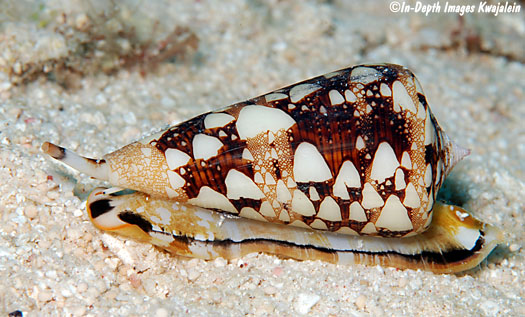
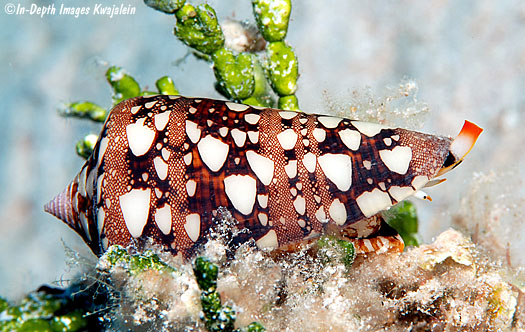
These close views of the anterior end shows the black and orange tipped tube
extending farthest from the shell. This is the siphon, and is used to draw water
in to pass over the gills. Below the siphon is a small white tentacle bearing
a black eye and red-tipped point. Another of these eyestalks is mostly hidden
on the other side of the siphon.
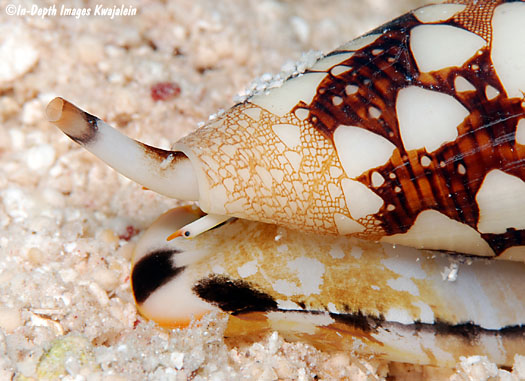
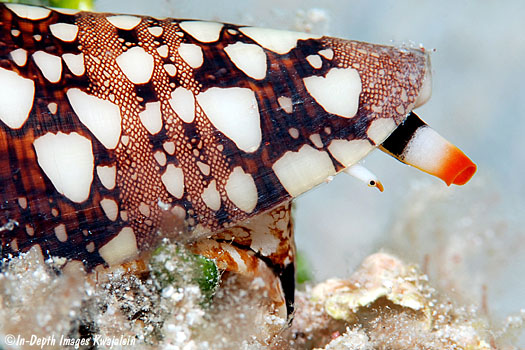
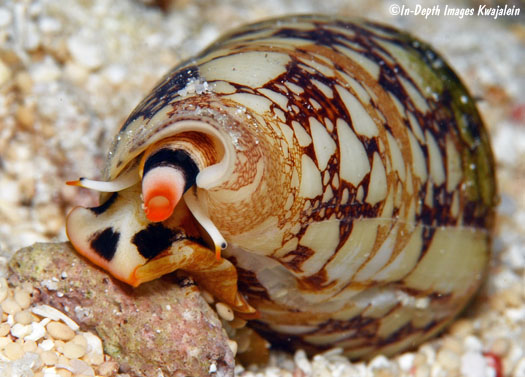
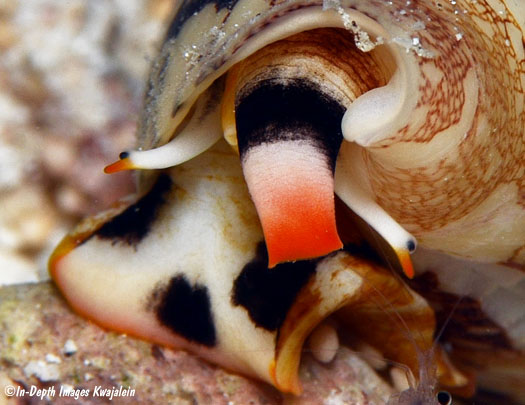
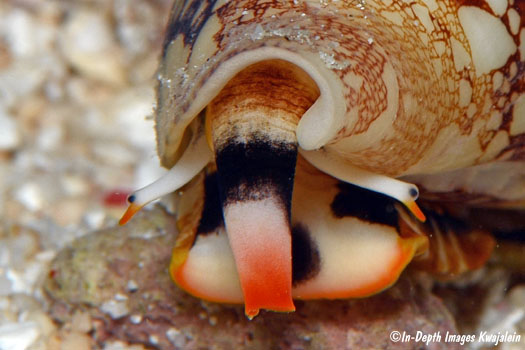
The
shell is sometimes encrusted with algae as is part of the one below, shown with
its egg capsules, which the cone attached to Halimeda algae plants.
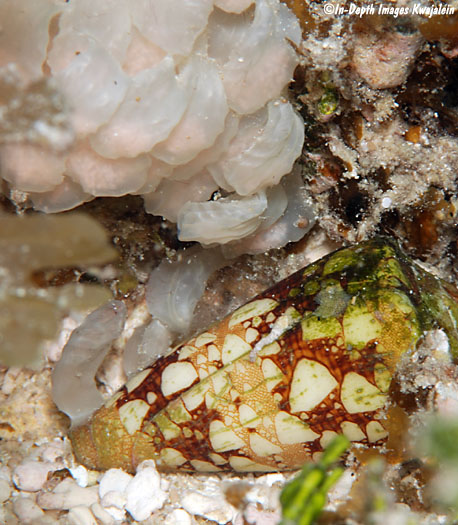
More with egg capsules.
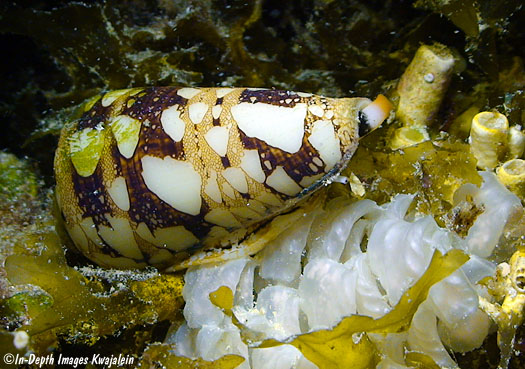
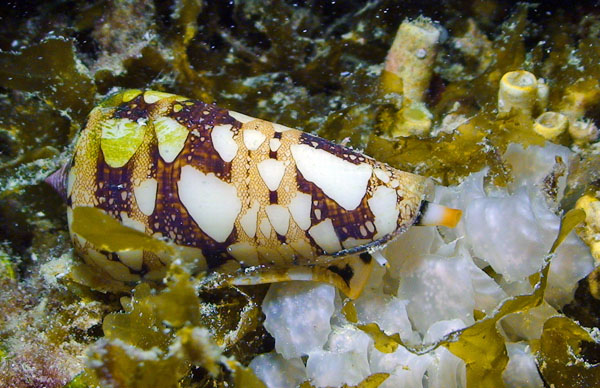
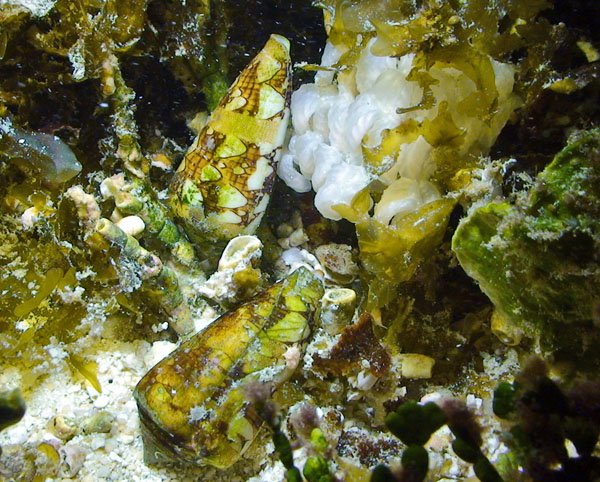
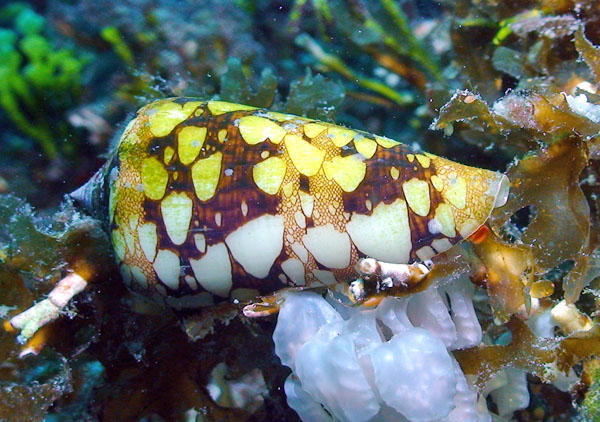
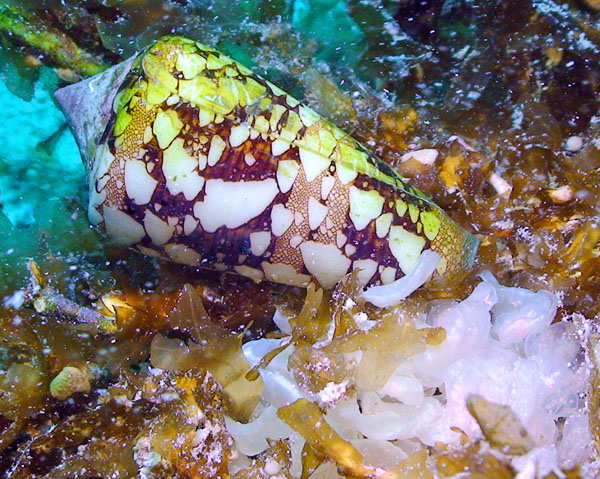
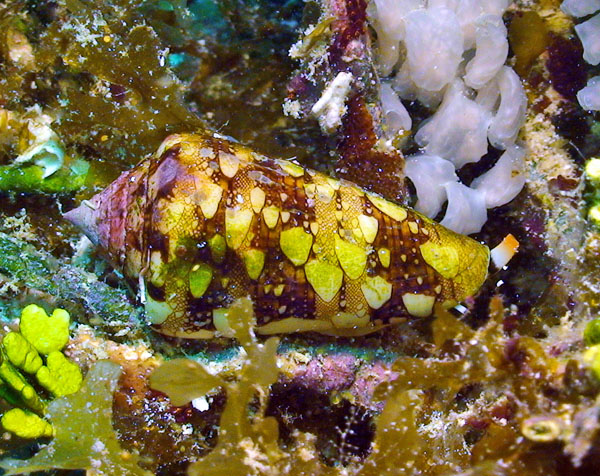
More in typical habitat.
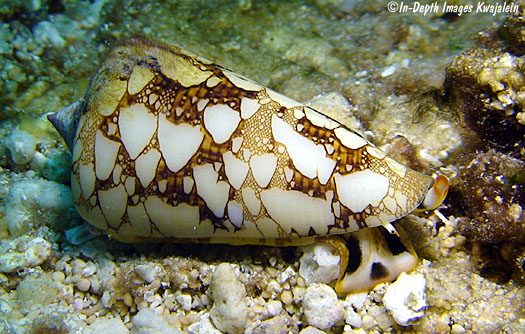
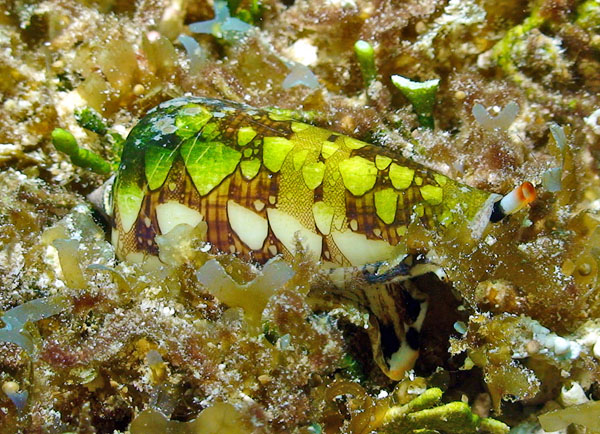
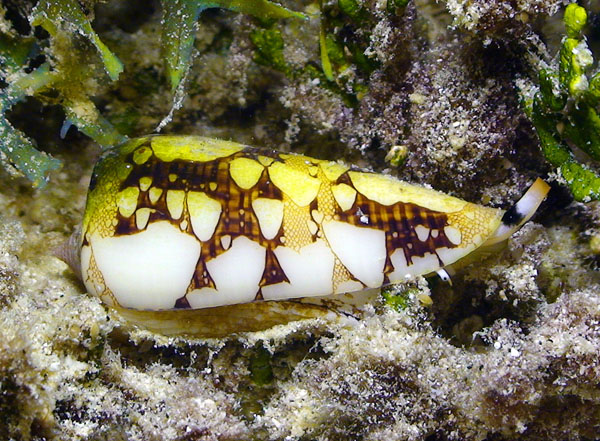
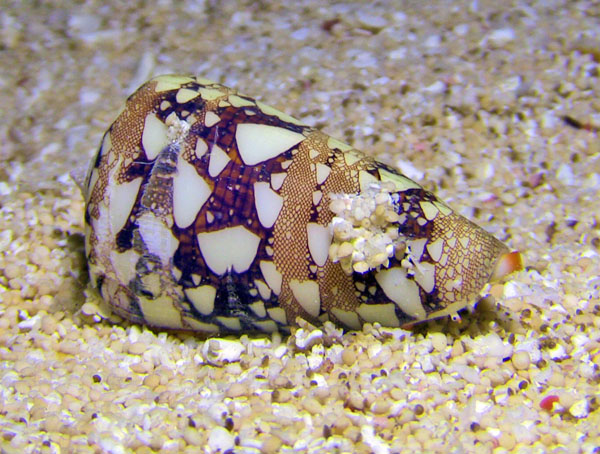
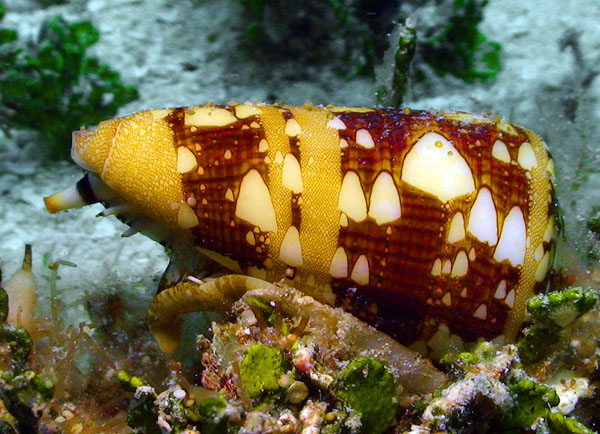
Small specimens often have proportionally larger white tent shapes on the shell.
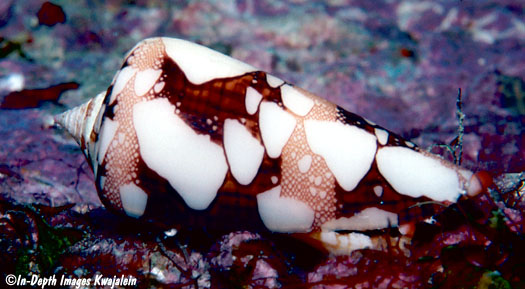
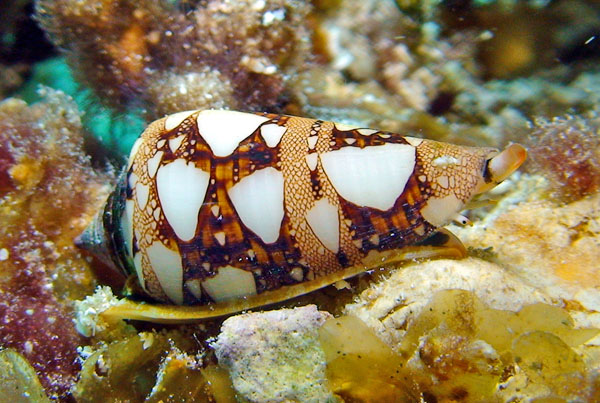
The next shot shows how damaged
a cone shell can be when its lip is broken back and then allowed to regrow.
Possibly a crab or other predator tried to get this shell by peeling back its
aperture, but the cone survived.
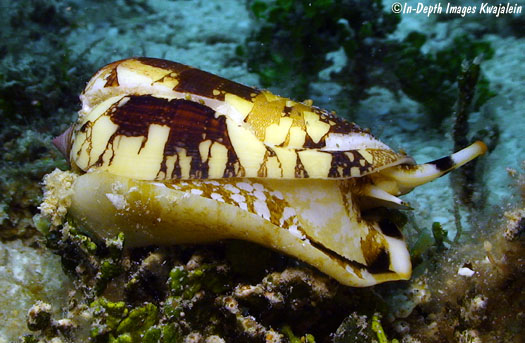
Typical variety.
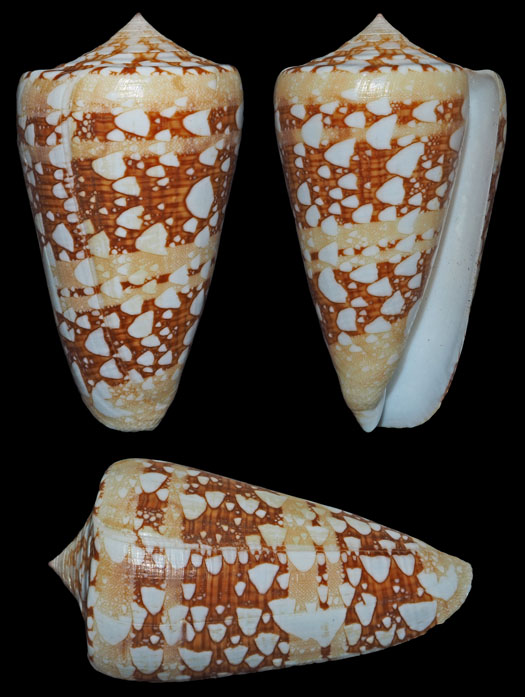
Darker variety with finer tent
markings.
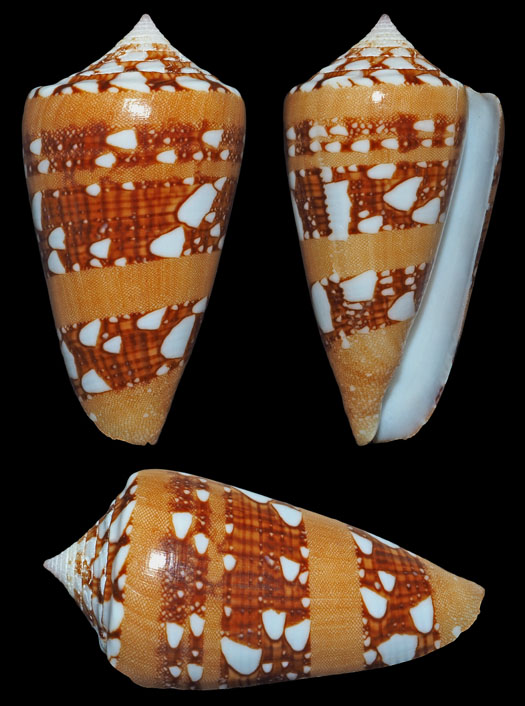
45.5mm shell

72.2mm shell.
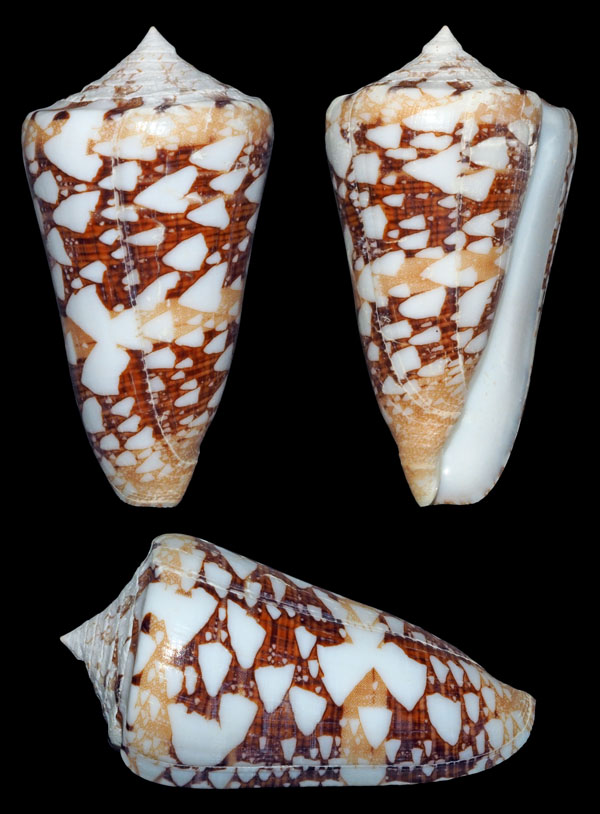
Juvenile.
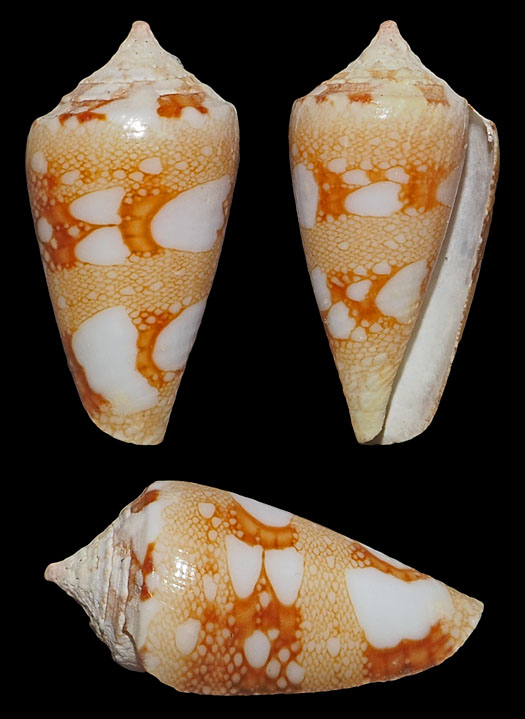
Created
4 July 2009
Updated 4 May 2024
Return to cones
Kwajalein Underwater home



























